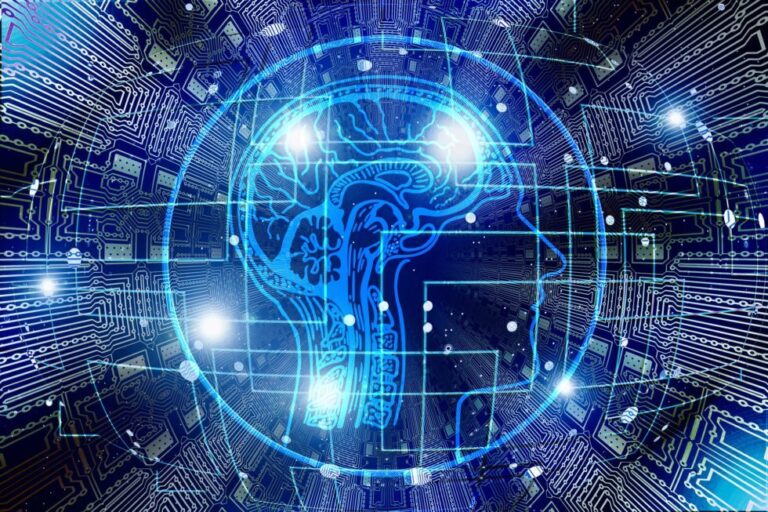The field of artificial intelligence (AI) has seen tremendous growth in 2023. Generative AI, which focuses on creating realistic content such as images, sound, video and text, has been at the forefront of these developments.
Models like DALL-E 3, Stable Diffusion, and ChatGPT have introduced new creative capabilities but also raised concerns about ethics, biases, and abuse.
As generative AI continues to evolve at a rapid pace, aspirations for mixtures of experts (MoE), multimodal learning, and artificial general intelligence (AGI) are likely to shape the next frontiers of research and applications.
This article will provide a comprehensive survey of the current state and future trajectory of generative AI, analyzing how innovations such as Google’s Gemini and anticipated projects such as OpenAI’s Q* are transforming the landscape.
It will examine real-world impacts in health, finance, education and other areas, while also revealing emerging challenges around research quality and the alignment of AI with human values.
ChatGPT’s launch in late 2022 has sparked renewed excitement and concern about AI in particular, from its impressive natural language prowess to its potential to spread misinformation.
Meanwhile, Google’s new Gemini model demonstrates significantly improved conversational ability over previous models like LaMDA, thanks to advances like spiking attention.
Rumored projects like OpenAI’s Q* hint at combining conversational AI with reinforcement learning.
These innovations signal a shifting priority towards multi-modal, versatile productive models.
Competition continues to intensify between companies such as Google, Meta, Anthropic and Cohere as they race to push the boundaries in responsible AI development.
Evolution of Artificial Intelligence Research

As capabilities increased, research trends and priorities also changed, often corresponding to technological milestones.
The rise of deep learning has revived interest in neural networks. natural language processing has increased with ChatGPT level models.
Meanwhile, amid rapid progress, attention to ethics remains a constant priority.
Preprint repositories such as arXiv have also seen a rapid increase in AI submissions, enabling faster dissemination but reducing peer review and increasing the risk of unchecked error or bias.
The interplay between research and real-world impact remains complex and requires more coordinated efforts to drive progress.
MoE and Multimodal Systems – The New Wave of Generative AI

To enable more versatile, advanced AI in a variety of applications, two prominent approaches are blending of experts (MNE) and multimodal learning.
MoE architectures combine multiple specialized neural network “experts” optimized for different tasks or data types.
Google Gemini uses MoE to master both long conversations and concise question answering. MoE allows a wider range of inputs to be considered without increasing the model size.
Multimodal systems like Google’s Gemini are setting new benchmarks by processing a variety of modalities beyond just text.
However, realizing the potential of multimodal AI requires overcoming key technical hurdles and ethical challenges.
Gemini: Redefining Criteria in Multi-modality
Gemini is a multi-modal, conversational AI designed to understand connections between text, images, audio, and video.
The dual encoder structure, cross-modal attention, and multimodal decoding enable enhanced contextual understanding.
Gemini is thought to surpass single encoder systems in relating textual concepts to visual fields.
Integrating structured knowledge and specialized training, Gemini surpasses its predecessors such as GPT-3 and GPT-4 in:
- Breadth of methods covered, including audio and video
- Performance on benchmarks such as massive multitasking language understanding
- Generating code between programming languages
- Scalability through special versions such as Gemini Ultra and Nano
- Transparency through justification of outputs
Technical Obstacles in Multimodal Systems
Realizing robust multimodal AI requires resolving issues around data diversity, scalability, evaluation, and interpretability.
Unbalanced data sets and disclosure inconsistencies introduce bias. Processing multiple data streams strains computing resources and requires optimized model architectures.
Advances in attention mechanisms and algorithms to integrate conflicting multimodal inputs are needed.
Scalability issues remain due to extensive computational overhead. Refining evaluation metrics with comprehensive benchmarks is crucial. Increasing user trust through explainable AI is also vital.
Overcoming these technical hurdles will be key to unlocking the capabilities of multimodal AI.
Combining the Building Blocks of Artificial General Intelligence

AGI represents the hypothetical probability of AI matching or exceeding human intelligence in any field. While modern AI has been successful at narrow tasks, AGI remains far off and controversial given its potential risks.
However, increasing advances in areas such as transfer of learning, multitasking training, conversational ability, and abstraction are taking a step closer to the lofty vision of AGI.
OpenAI’s speculative Q* project aims to integrate reinforcement learning into Masters as a step forward.
Ethical Boundaries and Risks of Manipulating AI Models
Jailbreaks allow attackers to bypass ethical boundaries established during the AI fine-tuning process.
As a result, the production of harmful content such as misinformation, hate speech, phishing emails and malicious code poses risks to individuals, organizations and society in general.
For example, a jailbroken model could produce content that promotes divisive narratives or supports cybercriminal activities. ( More information )
While no cyberattacks using jailbreak have been reported yet, multiple proof-of-concept jailbreaks are available for sale online and on the dark web.
These tools provide prompts designed to manipulate AI models like ChatGPT, potentially allowing hackers to leak sensitive information through company chatbots.
The proliferation of these tools on platforms such as cybercrime forums highlights the urgency of addressing this threat.
Reducing Jailbreak Risks
A multifaceted approach is required to counter these threats:
- Robust Fine-Tuning : Incorporating a variety of data into the fine-tuning process increases the model’s resilience to hostile manipulation.
- Adversarial Training : Training with adversarial examples improves the model’s ability to recognize and resist manipulated input.
- Regular Evaluation : Continuous monitoring of outputs helps detect deviations from ethical rules.
- Human Oversight : Involving human reviewers adds an additional layer of security.
AI-Enabled Threats: Hallucination Exploitation
AI hallucination, where models produce outputs that are not based on training data, can be weaponized.
For example, attackers manipulated ChatGPT to suggest non-existent packages, leading to the spread of malware.
This highlights the need for constant vigilance against such exploits and robust countermeasures. ( Discover More )
While the ethics of pursuing AI remain fraught, its aspirational pursuit continues to influence productive AI research directions—whether current models resemble stepping stones or detours on the path to human-level AI.


























